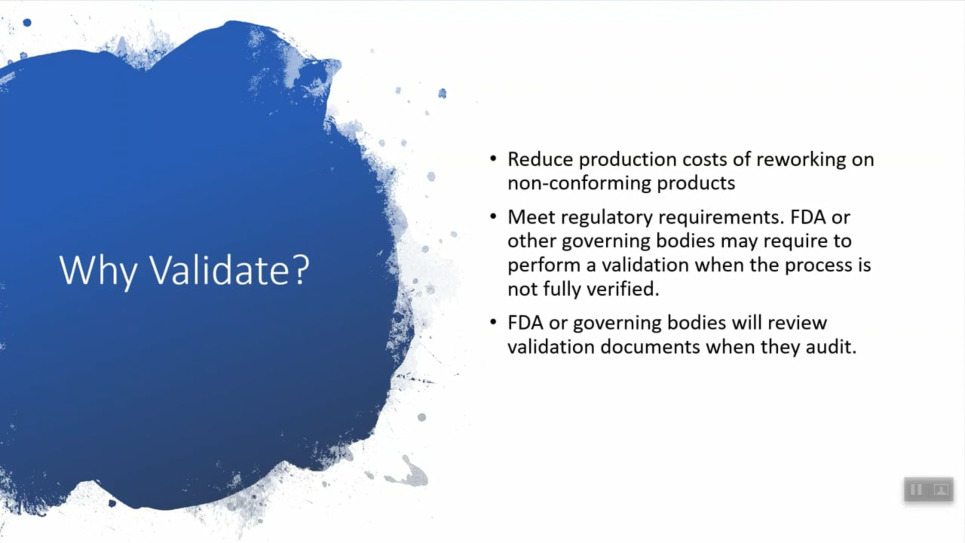Can't find what you're looking for?Tell us what you need and we'll build it!
- +1 (714) 578-6100
Mon - Fri, 5:30 AM - 5:30 PM, PST
A lab glove box is an enclosure that effectively isolates the interior process environment from the outside or ambient environment to protect the operator outside the glovebox and/or processes inside the glovebox. Gloves installed in the front- or side-panels allow user(s) to safely perform tasks inside the glovebox without breaking containment. Common applications include sensitive operations requiring controlled atmospheres, or handling of hazardous materials.
Glove boxes have as many names as they do shapes and sizes. Terra manufacturers and stocks glove box designs for every application:
The material used to build a custom glove box must provide both a durable and effective isolation barrier. The material must also support the required conditions inside the glovebox. Keep the below characteristics in mind to choose a material that best fits your glovebox application:
A stainless steel glovebox provides the best combination of durability, chemical resistance, and cleanliness. Terra’s stainless steel glove box designs are available in 316 or 304 stainless steel. Safety glass viewing windows include fluorescent lighting to illuminate the interior work area. Stainless steel gloveboxes can also be designed to hold negative pressure or full vacuum.
Terra’s BioSafe® stainless steel glovebox isolator is designed specifically for bio-pharmaceutical processes. These stainless steel glove boxes feature continuous seam welds, wide radius corners, and sloped bottoms for easy wipe downs and sterilization. The access doors are removable and auto-clave safe. Optional HEPA or ULPA filtration systems can be integrated to the glovebox to remove submicron powders and aerosols.
A plastic glove box is usually the lowest cost option, however is not the ideal choice for moisture sensitive applications. Although convenient, these portable glove boxes are hygroscopic and permeable, which allow moisture and oxygen to penetrate the enclosure over an extended time. A continuous internal positive pressure of inert gas helps to compensate for the permeable and hygroscopic characteristics of the plastic panels. Terra manufactures and stocks several types of plastic lab glove box designs:
A process gas or “purge gas” is used to displace moisture and oxygen-laden ambient air inside the glovebox. Generally, the selection of a process gas is based on its ability to retard chemical reaction, especially oxidation. Nitrogen is the most common process gas because it is inert, nontoxic, noncombustible, and relatively inexpensive.
Thus gloveboxes are often purged with dry Nitrogen gas to maintain an anaerobic and inert atmosphere that prevents unwanted chemical reactions, such as oxidation and hydrolysis.
RH recovery time is the time required to recover to the desired relative humidity or moisture set point after the glovebox is opened and exposed to ambient air.
The acceptable RH set point depends on your process application and requirements. Many semiconductor and optical sensing devices include electronics that require a storage environment of less than 10% RH as they are degraded by brief exposure to moisture substantially above this level. Unfortunately, depending on the size of the glove box, some isolator glove boxes can require up to an hour to retain a 10% RH set point, particularly if ambient humidity is high. If a door is opened again before set point is attained, parts may be exposed to unacceptable moisture levels for hours!
More critical applications may require moisture concentration levels below 1% RH, which can be measured in parts per million (PPM) by volume.
Terra offers a number of accessories to improve the efficiency and effectiveness of nitrogen purged gloveboxes:
Glove box exhaust gas collection is optional since the glove box usually functions independently from the exhaust network. However, operations involving hazardous materials may require connecting the glove box to an external facility exhaust system.
A standard single-operator glove box can consume up to one cylinder of inert gas to achieve an initial set point of 5-10% relative humidity. It can take as much as two cylinders of inert gas to purge the system to achieve lower levels for more critical applications. As an approximate rule, the amount of purge gas required is easy to calculate: first you must calculate the volume of your glovebox in cubic feet - a typical single operator glovebox is approximately 20 cubic feet. Then, multiply the volume by 10 for applications requiring 5-10% RH and by 15 for more critical environments. There is 300 cubic feet of gas in a standard gas cylinder so you will need about 2 cylinders of gas.
An on-site Nitrogen generator can eliminate supply constraints and other problems caused by bulky pre-filled Nitrogen cylinders. The system uses a nitrogen membrane to filter ambient air and produce a constant supply of up to 99%+ pure dry Nitrogen gas.
Terra offers isolator gloves and sleeves with designs and materials for every application:

A vacuum glove box provides a negative pressure controlled environment, including full vacuum conditions comparable to outer space. Gloves installed on the front- or side-panels allow user(s) to safely perform tasks inside the glovebox without breaking containment. Terra’s vacuum glove box isolators are used for degassing operations, low-moisture, low-oxygen environments, atmospheric simulation, sensor calibration, and multi-stage vacuum pressure testing.
Vacuum glove boxes are ideal for vacuum cycling and process gas backfilling. This provides a fast, economical way to achieve extremely low moisture and oxygen levels inside the chamber. Acrylic Vacuum Glove Box designs are built with heavy-duty one-inch-thick walls to hold full vacuum down to 29.9" Hg (99.9% vacuum).
Terra’s stainless steel negative-pressure glove box designs offer a range of benefits for special applications that require only partial vacuum. Stainless steel outgasses less than acrylic, is easier to clean, has higher chemical resistance, and is well suited for higher temperature applications. Removable side panels and access doors also make it easy to transfer large equipment and materials. Continuous-seam welded vacuum glove box designs provide easy-to-clean interiors and reduce negative-pressure leak rates.
Vacuum glove boxes can be configured and customized for almost any application. Terra’s Vacuum Control Module automatically controls pump operation to achieve a target vacuum pressure and prevent pump damage during vacuum cycling. Terra’s Dual Purge™ and NitroWatch® nitrogen purge systems offer automatic and efficient sub-ambient RH control down to 0%RH. For even greater accuracy and control, Terra’s DewWatch™ measures moisture volumes down to 0.5 PPM. A trace oxygen analyzer can also be configured for high-precision oxygen detection down to 0% PPM.
Browse our wide selection of vacuum glove box systems and accessories online. Call, email, or chat with a live product specialist to request a free quote or discuss configurations and custom solutions.
 Stainless Steel Single Series 310 Negative Pressure Glovebox
Stainless Steel Single Series 310 Negative Pressure Glovebox Right Airlock Acrylic Vacuum Glovebox
Right Airlock Acrylic Vacuum Glovebox Series 200 Negative Pressure Glove Boxes
Series 200 Negative Pressure Glove Boxes Terra Universal IQ-OQ Process
Terra Universal IQ-OQ Process
1 Item

This Glove Box allows safe mixing and handling of fuming chemistries. Half-inch thick acrylic chamber walls support a negative pressure of up to 5" WG, typically more than adequate for ventilating the Glove Box with either a vacuum pump or an exhaust fan. Ductless exhaust applications include an activated charcoal filter for safe removal of specific chemicals from the exhaust flow.
Arm port caps are opened when the chamber is being ventilated to allow influx of make-up air, and closed during purge operations to permit precise regulation of the negative pressure. A built-in pressure safety valve automatically opens at negative pressures in excess of 5" WC to protect the chamber.
A negative pressure air lock, with .25" (6 mm) vacuum line fittings and pressure safety valve, is specified for low-level negative pressures (to 5" WG), and a cylindrical pass-through vacuum antechamber is specified for processing at full vacuum.
Can't find what you're looking for?Tell us what you need and we'll build it!



